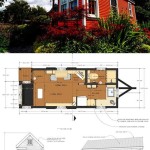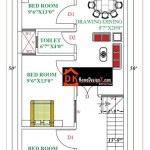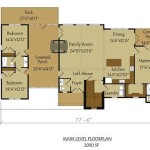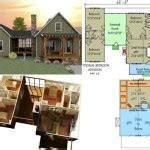A traditional house plan refers to an architectural design that adheres to classic and conventional styles, often rooted in historical periods or regional influences. These plans typically prioritize symmetry, ornamentation, and a formal arrangement of spaces.
Traditional house plans have remained popular over the years due to their enduring appeal and sense of timeless elegance. They evoke a sense of nostalgia and provide a solid foundation for creating homes with character and charm. For example, Georgian-style houses, known for their symmetrical facade and elaborate columns, are a classic representation of a traditional house plan.
In the following sections, we will delve deeper into the key characteristics, benefits, and considerations associated with traditional house plans, exploring their specific architectural features, floor plans, and design elements.
Traditional house plans offer a timeless and elegant foundation for home design, characterized by the following key points:
- Symmetrical facade
- Ornate details
- Formal floor plans
- Classic architectural styles
- Enduring appeal
- Sense of nostalgia
- Emphasis on craftsmanship
- High-quality materials
- Charming character
These elements combine to create homes that are both visually appealing and functional, providing comfortable and inviting living spaces.
Symmetrical facade
A symmetrical facade is a defining characteristic of traditional house plans. It refers to the balanced and mirror-image arrangement of architectural elements on the front of the house. This creates a sense of order, harmony, and visual appeal.
- Equal proportions: The two halves of the facade are mirror images of each other, with windows, doors, and other features arranged in a symmetrical manner.
- Central focal point: Often, a symmetrical facade features a central focal point, such as a grand entrance with columns or a decorative window.
- Balance and stability: The symmetry creates a sense of balance and stability, making the house appear visually pleasing and well-proportioned.
- Classic aesthetic: Symmetrical facades have been a hallmark of traditional architecture for centuries, lending a timeless and elegant aesthetic to homes.
Overall, a symmetrical facade enhances the curb appeal of a traditional house plan, creating a sense of order, beauty, and enduring charm.
Ornate details
Traditional house plans often incorporate ornate details that add visual interest and a touch of sophistication to the home’s exterior and interior.
- Moldings and trim: Elaborate moldings and trim around windows, doors, and ceilings add depth and character to a traditional home. These elements can be simple or highly decorative, featuring intricate carvings or patterns.
- Columns and pilasters: Columns and pilasters, which are decorative vertical supports, can add a sense of grandeur and formality to a traditional facade. They can be fluted, Doric, Ionic, or Corinthian in style, each with its own unique characteristics.
- Porticos and pediments: Porticos, supported by columns or pilasters, and pediments, triangular gables above doors or windows, are common features of traditional house plans. They add a touch of elegance and architectural interest to the home’s exterior.
- Decorative hardware: Ornate hardware, such as door knockers, hinges, and handles, can enhance the overall aesthetic of a traditional home. These elements can be made of brass, iron, or other materials and often feature intricate designs.
Incorporating ornate details into a traditional house plan adds a layer of refinement and visual appeal, creating a home that exudes charm and character.
Formal floor plans
Traditional house plans typically feature formal floor plans that emphasize symmetry, balance, and defined spaces. This layout creates a sense of order and elegance, making it ideal for entertaining and hosting guests.
- Axial organization: Formal floor plans are often organized around a central axis, with rooms arranged symmetrically on either side. This creates a sense of balance and harmony throughout the home.
- Defined spaces: Traditional house plans often have clearly defined spaces, such as separate living rooms, dining rooms, and libraries. This allows for specific activities to take place in designated areas, creating a sense of order and formality.
- Grand entryways: Many traditional house plans feature grand entryways with high ceilings and elaborate staircases. These spaces make a statement and set the tone for the rest of the home.
- Interconnected rooms: While rooms in a traditional house plan are often defined, they are also often interconnected through archways, columns, or pocket doors. This allows for a sense of flow and connectivity while maintaining the formality of separate spaces.
Overall, formal floor plans in traditional house plans create a sense of order, elegance, and grandeur, making them ideal for those who appreciate classic design and sophisticated living spaces.
Classic architectural styles
Traditional house plans draw inspiration from classic architectural styles that have stood the test of time. These styles are characterized by their distinctive features, proportions, and overall aesthetic appeal.
- Georgian: Georgian architecture, popular in the 18th and 19th centuries, is known for its symmetrical facades, rectangular shape, and elegant details. Georgian houses often feature a central entrance with a pediment or portico, as well as large windows with shutters. The style exudes a sense of grandeur and sophistication.
- Federal: Federal architecture, prevalent in the late 18th and early 19th centuries, shares many similarities with Georgian style. However, it incorporates more delicate details and ornamentation. Federal houses often have Palladian windows, decorative moldings, and intricate . They exude a sense of refinement and charm.
- Neoclassical: Neoclassical architecture, inspired by ancient Greek and Roman designs, emphasizes symmetry, balance, and monumental grandeur. Neoclassical houses often feature columns, pediments, and other classical elements. They are known for their stately appearance and sense of timeless elegance.
- Victorian: Victorian architecture, popular in the mid- to late-19th century, encompasses a diverse range of styles, including Gothic Revival, Italianate, and Queen Anne. Victorian houses are known for their elaborate ornamentation, asymmetrical facades, and steeply pitched roofs. They exude a sense of eclecticism and charm.
These classic architectural styles provide a foundation for traditional house plans, offering a wide range of design options to suit different tastes and preferences.
Enduring appeal
Traditional house plans have stood the test of time, maintaining their popularity and appeal for centuries. This enduring appeal can be attributed to several key factors:
- Timeless design: Traditional house plans are rooted in classic architectural styles that have proven their worth over generations. Their symmetrical facades, balanced proportions, and elegant details create a sense of timeless beauty that transcends changing trends.
- Functionality: Traditional house plans prioritize functionality and livability. The formal floor plans, with defined spaces and interconnected rooms, allow for both gracious entertaining and comfortable everyday living. The well-proportioned rooms and ample natural light create a sense of spaciousness and comfort.
- Quality construction: Traditional house plans often emphasize high-quality construction and materials. Durable materials, such as brick, stone, and wood, ensure longevity and resilience. The attention to craftsmanship and detailing results in homes that are built to last.
- Emotional connection: Traditional house plans evoke a sense of nostalgia and emotional connection for many people. They represent a link to the past and a sense of heritage. The familiar architectural features and classic designs resonate with our collective memories and create a sense of comfort and belonging.
These factors combine to give traditional house plans their enduring appeal. They offer a timeless aesthetic, functional living spaces, durable construction, and an emotional connection that continues to attract homeowners generation after generation.
Sense of nostalgia
Traditional house plans evoke a sense of nostalgia for many people, creating a connection to the past and a feeling of familiarity and comfort. This nostalgia stems from several factors:
- Familiar architectural features: Traditional house plans incorporate familiar architectural features that have been passed down through generations. These features, such as symmetrical facades, gabled roofs, and dormer windows, resonate with our collective memories and create a sense of connection to the past.
- Historical significance: Many traditional house plans are inspired by historical architectural styles, such as Georgian, Victorian, and Colonial. These styles represent different eras and cultures, evoking a sense of nostalgia for a bygone time. Homeowners may feel a connection to the history and heritage embodied in these architectural styles.
- Personal experiences: Traditional house plans often resemble the homes we grew up in or have fond memories of. These associations can trigger feelings of nostalgia and a desire to recreate the comfortable and familiar atmosphere of our childhood homes.
- Cultural and societal influences: Traditional house plans reflect the cultural and societal values of the time in which they were designed. They represent the prevailing tastes, aspirations, and lifestyles of past generations. By choosing a traditional house plan, homeowners can connect with these values and feel a sense of belonging to a larger cultural narrative.
Overall, the sense of nostalgia associated with traditional house plans stems from their familiar architectural features, historical significance, personal experiences, and cultural influences. These factors combine to create a sense of connection to the past and a feeling of comfort and familiarity that many homeowners find appealing.
Emphasis on craftsmanship
Traditional house plans place a strong emphasis on craftsmanship, ensuring that every detail is executed with precision and care. This focus on quality construction and fine detailing results in homes that are not only beautiful but also durable and timeless.
Skilled artisanship: Traditional house plans are often crafted by skilled artisans who take pride in their work. These artisans possess a deep understanding of traditional building techniques and use their expertise to create homes that are both structurally sound and visually appealing. From intricate moldings to custom millwork, every element is carefully crafted to the highest standards.
Durable materials: Traditional house plans often incorporate durable materials that can withstand the test of time. These materials, such as brick, stone, and high-quality are known for their strength, longevity, and resistance to the elements. By using these materials, traditional homes can maintain their beauty and functionality for generations to come.
Attention to detail: Craftsmanship in traditional house plans extends to every detail, no matter how small. From the intricate carvings on a staircase to the delicate hardware on a door, each element is carefully considered and executed with precision. This attention to detail creates a sense of refinement and elegance that sets traditional homes apart.
The emphasis on craftsmanship in traditional house plans ensures that each home is a unique work of art, built to last and enjoyed for generations to come.
High-quality materials
Traditional house plans prioritize the use of high-quality materials that ensure durability, longevity, and aesthetic appeal.
Durable materials: Traditional house plans often incorporate durable materials that can withstand the test of time. These materials include:
- Brick: Known for its strength, fire resistance, and low maintenance, brick is a popular choice for traditional house exteriors. Brick homes can last for centuries with proper maintenance.
- Stone: Natural stone, such as granite, limestone, and sandstone, is another durable material used in traditional house plans. Stone provides a timeless and elegant look while offering excellent resistance to weathering.
- High-quality wood: Traditional house plans often use high-quality wood for framing, siding, and interior finishes. Woods like oak, mahogany, and cherry are known for their strength, durability, and beautiful grain patterns.
Resistant to elements: The high-quality materials used in traditional house plans are chosen for their resistance to various elements. They can withstand extreme temperatures, humidity, and pests, ensuring the longevity and integrity of the home.
Low maintenance: Many of the materials used in traditional house plans require minimal maintenance. Brick and stone exteriors can last for decades without needing repainting, while high-quality wood finishes can be easily maintained with regular cleaning and occasional refinishing.
By using high-quality materials, traditional house plans create homes that are not only beautiful but also durable and low-maintenance, providing homeowners with peace of mind and long-lasting value.
Charming character
Traditional house plans exude a charming character that sets them apart from modern designs. This charm is derived from a combination of architectural and design elements that evoke a sense of nostalgia, warmth, and timeless appeal.
- Historical influences: Traditional house plans draw inspiration from historical architectural styles, such as Georgian, Victorian, and Colonial. These styles incorporate classic elements like symmetrical facades, gabled roofs, and decorative trim, which lend a sense of heritage and timeless beauty to the homes.
- Ornate details: Traditional house plans often feature intricate details that add visual interest and character. These details may include decorative moldings, columns, pediments, and hardware. They enhance the curb appeal of the home and create a sense of elegance and sophistication.
- Natural materials: Traditional house plans often incorporate natural materials such as wood, brick, and stone. These materials add warmth and texture to the home’s exterior and interior. They also create a connection to the surrounding environment and provide a sense of durability and authenticity.
- Cozy interiors: Traditional house plans prioritize cozy and inviting interiors. They often feature fireplaces, built-in bookshelves, and comfortable window seats. These elements create a sense of warmth and hominess, making the home a welcoming and relaxing space.
Overall, the charming character of traditional house plans stems from their historical influences, ornate details, use of natural materials, and focus on cozy interiors. These elements combine to create homes that are not only visually appealing but also warm, inviting, and full of character.










Related Posts








